Asian Adventures on a Budget: Must-See Sites and Stays of Thailand

Koh Chang,Trat, Thailand. Photo: AzByCx/Getty Images
With a not-often-in-our-favour exchange rate, Canadian travellers looking to live large at low cost skip the current eye-watering mark ups of Western destinations — 25 per cent (US), 30 per cent (EU), 40 per cent (U.K.) — and head for Southeast Asia. You can’t beat a short, cheap direct flight to Mexico for a budget-friendly beach lounge but fly farther afield and you’re into $1,000 for a connecting 10-hour flight to Mallorca; $1,500 for an eight-hour direct to Lisbon, and then paying for everything in euros.
It does take a little longer to get to Asia, so it’s a getaway for those with 10 days or more, but if you avoid high season, you can fly in and out of Southeast Asia’s best capitals and coastlines for $2,000 (economy) and, once there, treat yourself to a bucket list break for pennies on the dollar.
Rich cultural experiences, fabulous food and stunning beaches, exotic cities and wow nature adventures, this is the first in a SE Asia travel series that will include Thailand, Cambodia and Vietnam. A trio of neighbouring nations linked by inexpensive flights, extensive train routes and endless boats and ferries, that can be experienced individually or, if you have the time, as a grand voyage that takes in all three.
Journey to Thailand
Bustling Bangkok
The Thai capital is a bustling metropolis of 11.5 million that brims with food, fashion and fun. The Big Apple of Southeast Asia, Bangkok excels at every stylish diversion — design hotels, swish cocktail bars, chic shops, gourmet cuisine — but is also a place travellers can do on a dime. The ultimate save or splurge destination, in this town, cheap street food earns Michelin stars, an hour-long massage costs what you spend on a four ounce glass of wine in a Vancouver restaurant. Cultural attractions are inexpensive and everywhere, and good hotel rooms for a hundred bucks or less are available — in abundance.
For charm, vintage architecture, leafy parks and riverside strolls, book a stay in or around Old Town. A historic district set along the Chao Phraya River that slices through the city, it’s home to many of its most significant cultural sites. Wat Po and Wat Arun temples and the Grand Palace are all walking distance, as is Bangkok’s marvellous, neon sign-lit Chinatown, which transforms into one of the world’s largest street food markets every night. Nearby, Charoen Krung Road in one of the city’s oldest neighbourhoods, Talat Noi, has been revitalized by young creatives who’ve lined it in trendy cafés, shops and restaurants. West of that, lies the very lively district of Sukhumvit, one of Bangkok’s top shopping, dining and nightlight hubs.
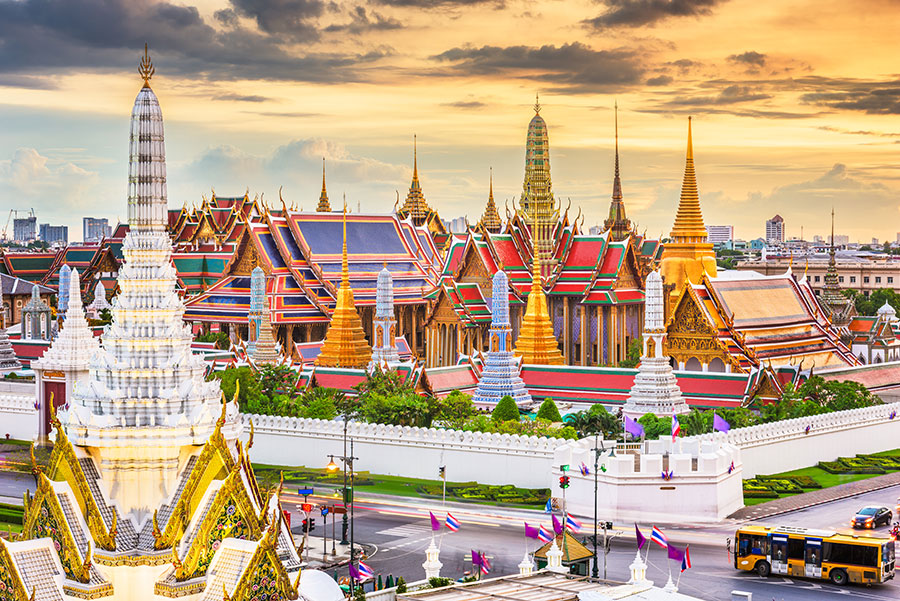
As of last count (2021), Bangkok had 290,000 hotel rooms (Toronto has 36,000), the trick is pawing through the endless options. Narrow things down by selecting a preferred area, like Old Town or adjacent Riverside or Sukhumvit, and vet rates on Agoda. The Booking.com of Asia can be 20 per cent, even 30 per cent, less than its western competitor.
Newer, stylish but very affordable addresses to consider include the two-storey 1905 Heritage Corner (from $105), which tucks three guest rooms, a small dining room and a lounge into a reclaimed heritage building in Old Town, designed with vintage flair. The cosy, family-run Baan Noppawong (from $75), a few blocks away, run by a lovely family on a quiet laneway. Between Old Town and Sukhumvit, the brand new ASAI Bangkok Sathorn ($95) has introduced 106 well-designed “thoughtfully compact” rooms and an excellent restaurant. In bustling Sukhumvit, the newly renovated, if oddly named, Tints of Blue (from $100) has nice decor and a small rooftop pool and The Mustang Nero (from $85) has become a cult hotel for its wildly unique design and thus, often sold out. Also in Sukhumvit, INNside by Melia (from $120) opened this year with all white interiors and a very glam rooftop pool. By contrast, the Lita, also new, is housed in a five-storey, former warehouse outfitted with guest rooms, a café, a laundry room and a communal kitchen — if you care to cook — and simple, well-appointed Double Studio rooms for just $50. If your guest house doesn’t have a pool, you can always book one with Dailypass.com. Hotel partners and offers vary, but $40 or so can buy you a full-day pool pass at a high-end resort property that includes an F&B credit worth more than the cost of the pass.
Despite its size and commotion, Bangkok is a fairly easy city to explore. Public transit boats service piers along the river and the Bangkok SkyTrain (BTS), the city’s elevated metro train system, is modern and easy to use, and taxis are cheap. For shorter trips, tuk tuks are fun, just be aware of the real cost and always confirm the rate before you get in — or they’ll charge you a nice tourist price. Meter cabs are actually cheaper and require zero negotiation, but the easiest thing is downloading the Grab app. The Uber of Thailand sends GPS-equipped drivers with cars — as well as scooters, if you’re feeling more adventurous — so no language issues or ‘scenic routes.’
The Pak Khlong Talat Flower Market is worth a wander. It’s the biggest in the world, open 24/7 and exploding with colourful blossoms of every kind. Jim Thompson House is another classic stop. The perfectly preserved home of Thailand’s expat silk king — a bon vivant and collector who lived a fascinating life — is now a museum with a lovely café overlooking a pond full of huge koi fish and a boutique. But don’t shop here, hit the outlet of this renowned purveyor of home goods on your way to the airport for big discounts on the brand’s luxury home linens, table linens, cushion covers, throw blankets and more.
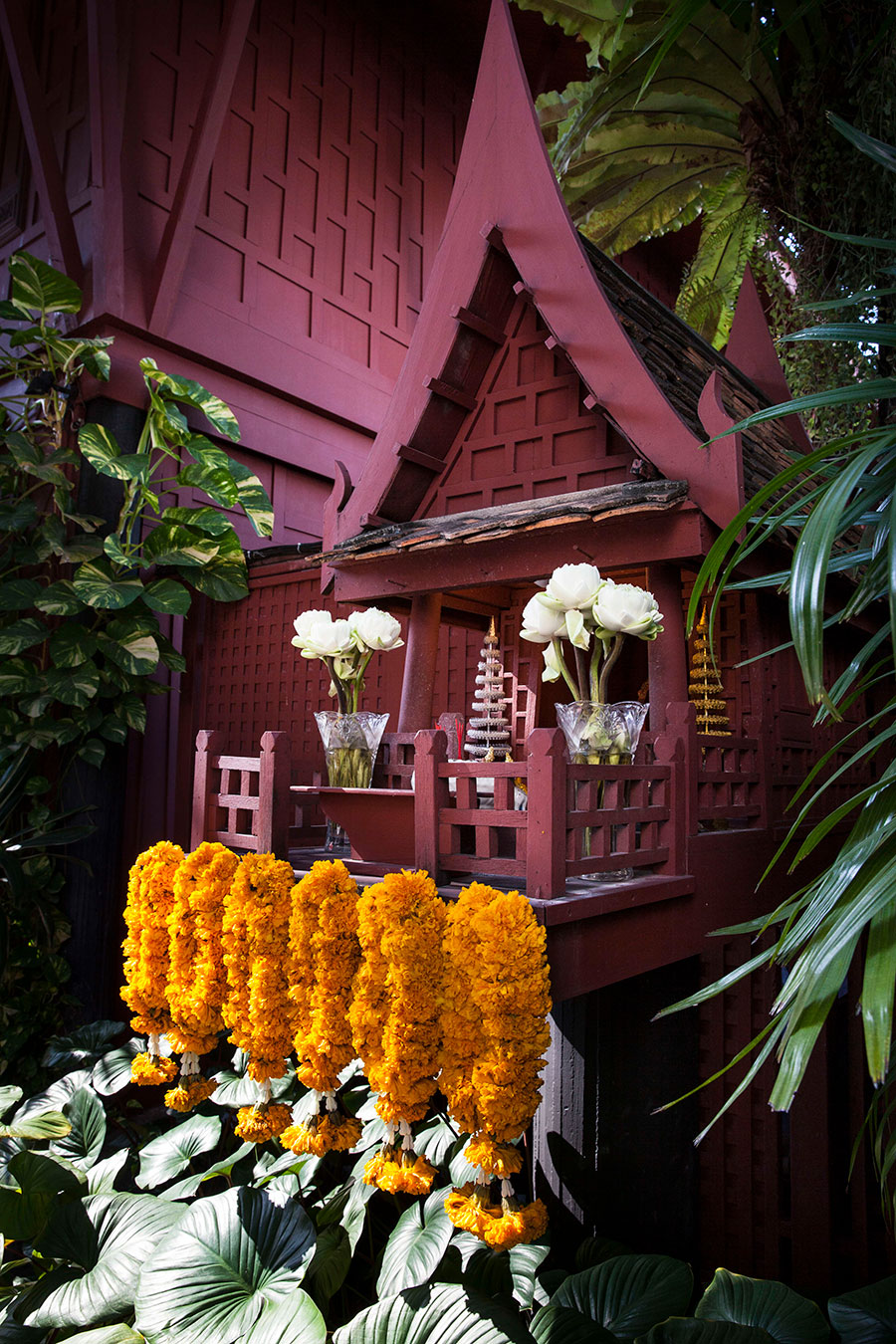
Lunch time? Head for Rongros on the waterfront. This intimate restaurant with a terrace, great style and fabulous views serves classic comfort food with a modern spin that’s so good, it’s earned a Michelin star. Still, their delicious, beautifully presented dishes cost $8 to $12 — and there’s a great wine list. Before sunset, find a rooftop bar — Bangkok is famous for them. The city’s most iconic is SkyBar on the 63rd floor terrace of the Lebua Tower, but drink prices have gotten absurd there ($35 … for a beer?) and you’ll find equally splendid, 360-degree views at the Baiyoke Sky Tower’s 83rd floor Rooftop Bar. The tallest building in town, the 400 baht ($15) cover charge there includes a cocktail.
Definitely book a street food tour. This is best to do soon after you arrive. With so much to choose from, a guide helps you learn which dishes, techniques and flavours you like best, so you’re more in-the-know when you’re on your own. Already know your Guay Tiew Naam from your Phad Woon Sen? Foodies can make their way through the city’s inexpensive epicurean street eats.
Finally, a dinner cruise along Bangkok’s Chao Phraya river sounds touristy but it offers truly spectacular evening views and excellent photo ops as you glide past Bangkok’s opulent golden waterfront temples, all of them brilliantly lit up at night. The choices here range from larger boats that host 200 guests, with grand buffet dinners, live entertainment and rooftop dining terraces ($57) to elegantly refurbished antique rice boats that cater to 20 to 60 passengers ($150). Either way, it’s a picturesque way to bid Bangkok adieu.
Going Coastal: The Koh Chang Archipelago
A one-hour, $50 flight from Bangkok takes you to the small city of Trat on the southeast coast of the Gulf of Thailand, by the Cambodian border. Offshore, you’ll find a constellation of 52 islands that are far less trammeled than their overdeveloped cousins Koh Samui, Koh Pipi, Phuket, Krabi, across the gulf. This is where you’ll find idyllic white sand beaches ringing islands that float in the deep, clear turquoise water of the Muko Chang national marine park, a protected 650 square kilometre conservation zone that’s been protected since 1982.
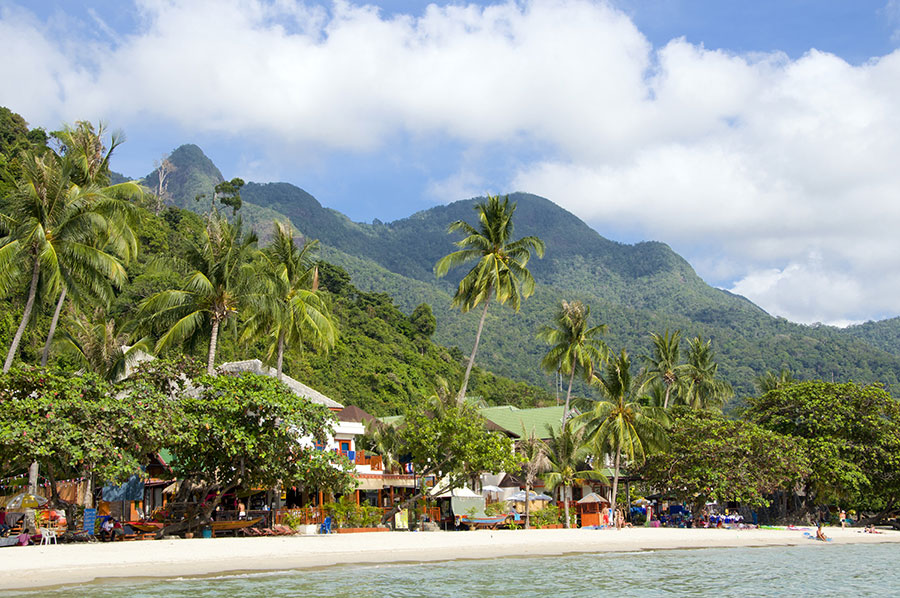
Ferries leave the Trat pier every hour, making the 45-minute trip from the mainland to the archipelago’s namesake island, Koh Chang, which is also the largest. From here, speed boats or traditional wooden longtails with outboard motors whisk travellers off to the smaller, outlying cays, some with hotels, some with no electricity that run on generators, others that are deserted islets. Among the better known:
Just 12.4 square kilometres, this tiny cay with a population of 1,500 is privately owned by five families whose ancestors settled it generations ago as a coconut palm and rubber tree plantation. Having agreed to a sustainability pact, Koh Mak is wonderfully safeguarded from unwanted development. Sadly, 7/11’s are everywhere in the Thai islands — there are 50 on Samui alone — but you won’t find even one on Koh Mak. There are no private cars, save a few public taxis, everyone gets around by motorbike, boat or bicycle. The island is so small, you can peddle around and visit all of its beaches, including deserted coves. There is one ATM, not always full of cash, but hotels will do an advances on your credit card for a fee. Lodging is similarly low key and you can score a sweet bungalow in off season for as little as $40. This property, for more than twice that price, has the best-designed beach bungalows but, curiously, no bar, or even alcohol, on site. You may want to check into a hotel that can serve you a cocktail. There are a handful of watering holes and restaurants, most located at other hotels. But Koh Mak, like all islands in this archipelago, are more about nature than nightlife, which is not to say you can’t get holiday tipsy at a beach bar.
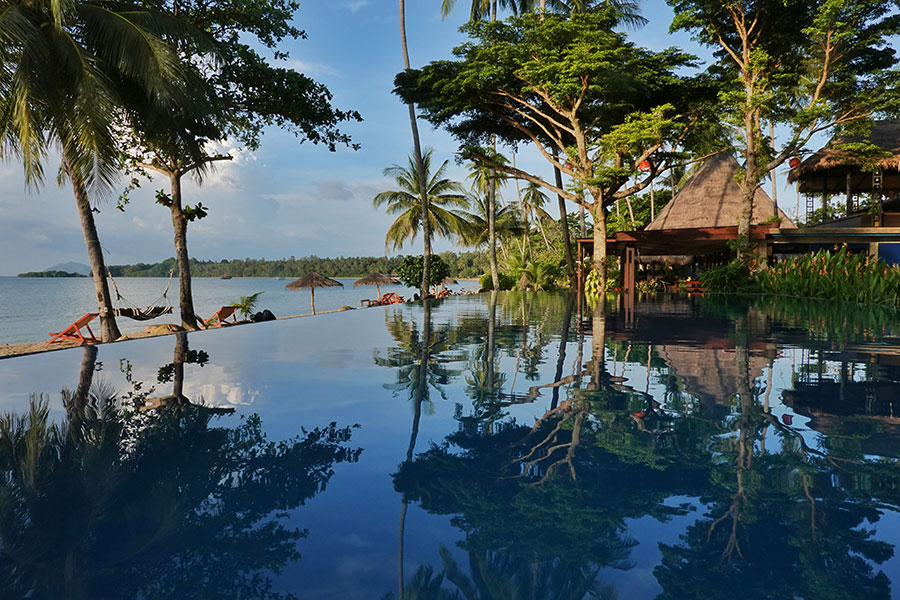
Koh Kood (also spelled Koh Kut)
This 111.9 square kilometre island is the second-biggest in the archipelago, after Koh Chang, and the fourth-largest in Thailand. It’s mountainous, with a jungle interior, terrific waterfall-swimming holes and some of the country’s most stunning beaches, and spanning one side of a gorgeous cove on the island’s east side is Ao Yai, a remote fishing village on stilts with a long boardwalk lined in rustic seafood restaurants. Pick anything you want, crab, lobster, mussels, clams, fish, straight out of the tanks and choose how you’d like it cooked: steamed, fried, deep-fried, grilled, spicy … The best place to stay, by far, is Koh Kood Resort, for its mid-island location and line up of rental scooters to explore the island and its beautiful beaches, as well as its crystal waters, long pier into the sea, beachy-chic design, terraced waterfront bar-restaurant and bungalows tucked into the jingle hills that you can book for $75 in off season. They just added a pool deck off the bar.
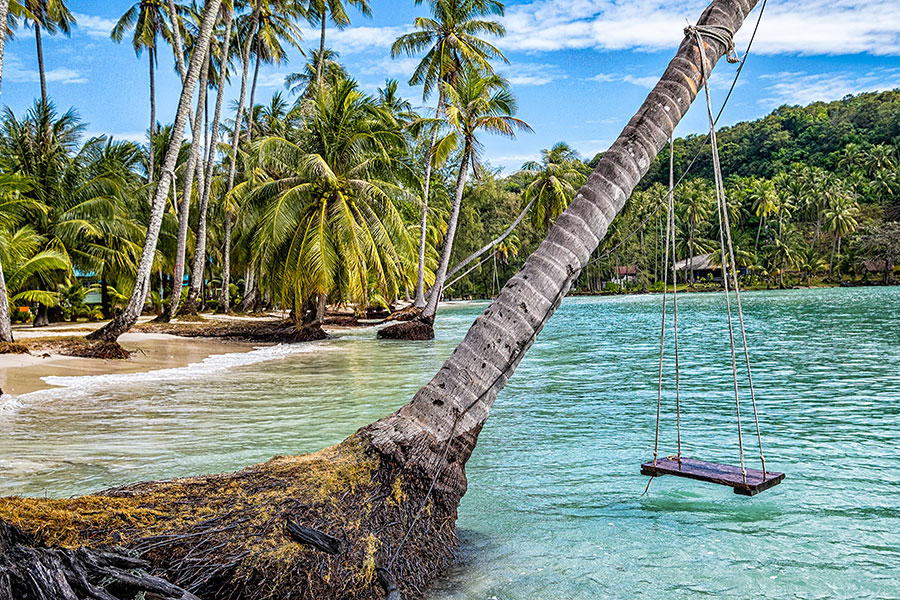
The best snorkeling in this 12-island cluster of the little cays (Koh Lon, Koh Yak, Koh Thonglang, Koh Wai, etc) is at the heart of the Muko Chang marine park. You can book full day boat tours, with lunch, that visit four or five islands; most stopping at Monkey Rock on the west coast of Bangbao peninsula where monkeys scamper down to the sea hoping to score some thrown fruit from passing boats. The bigger converted fishing boats charge about $26 per person and accommodate more passengers, while more bespoke operations, like Mr. Khai, have smaller boats, better food and visit islands that the larger boats don’t; $50.00 to $60.00 per person. Half day trips are best done by speedboat. The pros: being less travel time and fewer people. The cons: no toilet, no freshwater shower, no buffet lunch, no deckchairs. $30.00 to $45,00 per person.
Rainy season in this archipelago runs June to September, with speed boats ceasing operation August through September due to southwesterly monsoon winds that cause huge waves. November through April it has calm seas and dry weather. So late October/November and April/May is where you score shoulder season hotel rates. And smartly book stays on the island’s east sides since it’s the west coasts that absorb the autumn wind and waves.
Add-on Adventure: Chiang Mai and Elephant Sanctuaries
Spend a few days or a week volunteering at an elephant refuge. There are eight properties in Thailand approved by Responsible Travel, an organization devoted to environmentally friendly globetrotting since 2001. For as little as $210 a night, including meals and airport transfers, you can feed and bathe elephants in a conservation camp. Some itineraries include daily yoga and meditation, others allow you to live in a village with the Karen hill tribe and observe elephants in their natural habitat — the jungle. Most are located in the lush mountainous interior of northern Thailand and accessed via the city of Chiang Mai — a one-hour flight from Bangkok that costs less than $100.
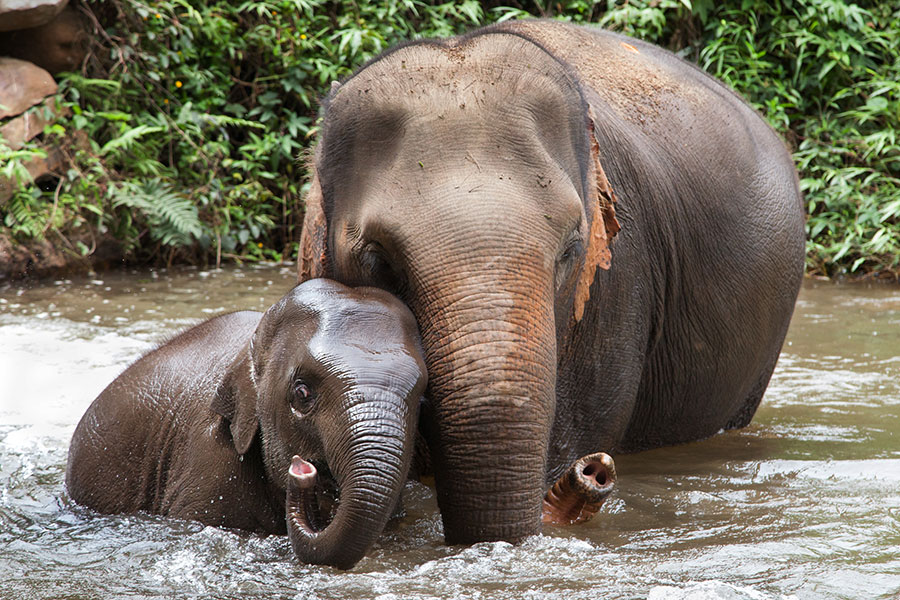
Photo: santirf/Getty Images
You can also take the overnight train, Bangkok to Chiang Mai, which is its own little adventure with the last third of the voyage offering the lovely experience of watching the sunrise as the train winds through the countryside and up into the mountains as it approaches the ancient city. With stunning flower gardens and hundreds of ornate Buddhist temples that date back to the 12th century, Chiang Mai is a historic cultural centre noted for its handicrafts — silverwork and wood carving to pottery and lacquerware. Given its cooler mountain climate, it’s also home to Phu Ping Palace, the hot weather retreat of the Thai royal family.
If you go:
Exchange Rate: C$1 = TBH26.00 (Thai Baht)
Cold beer (domestic): $3
Cappuccino: $3
Inexpensive delicious meal (one dish): $4
Tuk tuk or taxi per km: $1.55
Lovely, budget-friendly hotel room: $50 to $125
When to Go: November through March is the cooler, drier high season; April, May, June are the hottest months; July to October the wettest; March is the sweet spot for weather and prices.
Editor’s Note: All prices/exchange rates accurate at time of writing
RELATED:
A Taste of Thailand: A Recipe for Grilled Turkey Satay Skewers From Celebrated Chef Nuit Regular
Travel 2023: Explore Ways to Nurture Your Health and Wellness
Living the Island Life in Holbox, a Slice of Heaven Off the North Coast of Mexico